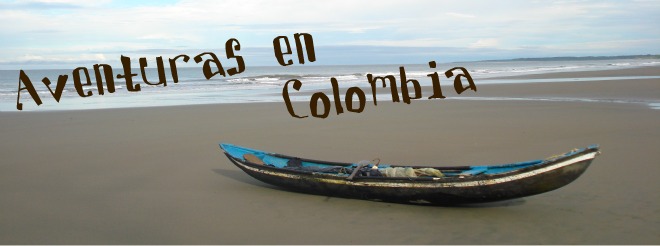I can now say I am an International Athlete. This past weekend I completed my first marathon. (I say "first" because although today I am hobbling around like a ninety-year old man with two new hips who forgot his cane, I plan to continue this athletic endeavor.)
The race took place along the beautiful Lago Calima in the northern part of the Valle de Cauca region (where Cali is located). The lake itself is actually a man-made resevoir created by the damming of a river and it is high in the mountains. This meant the course was hilly, the air was thinner, and the climate was perfect.
I did the race with one of the guidance counselors (Adriana) and a few senior students. One of the seniors had a family finca ("farm" or cottage) in the area so we all drove up the night before, had a great pasta dinner and relaxed. Being that I was traveling with people from school who do not want to get kidnapped, etc, we had a bodyguard escort us on a motorcycle and the car was bullet-proof. The bodyguard stayed with us all weekend, obviously.
My favorite conversation during the ride up included the sentence from Adriana who stated matter of factly that "If the guerilla stop us and try to shoot us we can just sit in the car and 'Miguel' [the body guard] will have to drive thru the cane fields to get help. If they pull a bazooka out though, we should probably get out of the car." Where are you people taking me that this conversation even needs to be brought up!?!
Anyways, the race began at 6am while the sun was still trying peak over the mountains. The starting of the race was a little anti-climactic because there were only about 500 runners total and at least half of them were only running the 1/2 marathon; running is not a very understood or popular sport here in Colombia.
The course was gorgeous but the hills were awful. I felt as though I was either running up or down the entire time; climbing or jamming my toes - pick one. Adriana has run several marathons in her life, including New York, and she said that this one was by far the most difficult one she has competed in yet.
I'll let the pictures tell the rest of the story for me:

This is around km 9 going throught the pueblo El Darién. The course started in the town, went 5 kilometers south and west, then returned to the town to go to the northern end of the lake.

At km 22, just past the half-way mark with a split of 1:36-something, and still feeling good enough to whip out the camera and snap some pictures. This is the dam at the northern-most end of the lake. The course continued around the tip and climbed away from the water for a solid 4 kilometers or so and then turned around to head back.

The military was present about every 1/2 kilometer or so. If I didn't want to count the painted kilometer markings on the road, I could have just waited to see army men. It would have been about as accurate.

Some of the aid stations had tables, others did not. This one did not. The girl working her assigned stop at km 24 was handing out the typical refreshment: bags of water. You can get these all over Colombia and they are a lot more environmentally friendly than bottles since they take less energy to make and less space in landfills. They are GREAT for races though because you just bite off the corner and squeeze the water into your mouth instead of clumsily spilling all over yourself with a paper cup.

The turn-around back to El Darién happened at km 26. This is right before km 28. Yes, the scenery is unbelievable, but sometimes it felt like the entire course was uphill.

KM 36 had cows in the road. Typical...
I hit my "wall" soon after this and the camera was forgotten temporarily. KM 39 got walked as I was tightening up pretty badly and it was uphill. It got to the point where I realized I could walk as fast as the tiny running steps I was taken - so I did.
When I got to El Darién's town square everyone was cheering and encouraging me on. The finish line was facing the "wrong" way and I wanted to walk across is so badly but I didn't know where to go in my exhausted state. Forget about speaking Spanish, I could barely function in English! I threw out the universal "where-do-I-go?" arm position and picked out one guy's voice who was telling me I had to "run around the park." I know it was a small block but seriously? The finish is RIGHT THERE and I just did 42 km! "Around the park" is an eternity!

After that eternity I finished and my new friend Juancho Correlón was there to greet me. 3 hours, 29 minutes, and 34 seconds later...
After I finished and waited for the rest of my group to come a lot of other runners were shaking my hand and asking me all kinds of standard questions like where I was from, did I like Colombia, did I like running, what was my time, will I do more, etc. As the sole foreign runner (and a pink freckly one at that) I was getting a lot of attention. As we were leaving an official came running over and said to Adriana, "You can't leave! You won a prize!" She asked him what he was talking about and he tells her she was the first finisher in the womens' division. Needless to say, by the time we left the area both of us had become minor celebrities.
I don't think I'm going to visit the track for the next couple days though.

















